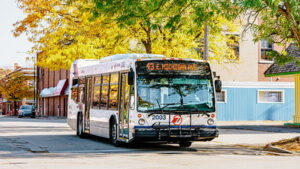College affordability is a primary factor in a high school student’s decision to take classes after high school. A report issued earlier this year by the US Department of Education concluded that 9 out of 10 high school seniors who believed their family could “afford” to send them to college actually enrolled. Only 6 out of 10 students who thought their family’s finances were not sound enrolled in college within three years of high school graduation.
The perception of college affordability turns out to be a major driver in whether the students apply for admission or seek out financial aid. Students who believe that they cannot afford college may not even conduct basic research regarding educational or financial options. Unfortunately, these students may pass up on a growing number of debt-free college opportunities.
Another major factor that impacts a high school student’s decision to attend or bypass college is the educational level of a parent. Students who believed they could not afford college and had at least one parent whose maximum educational attainment level was no greater than a high school diploma were least likely to attend college. Students whose parents had earned at least a bachelor’s degree were most likely to attend college.
College affordability is critical when attempting to reach the most marginalized students. The report suggests that the right information delivered to high school students at the right time – prior to their senior year – could help change their assessment of college affordability.
Trustees’ decisions impact college affordability
Of course, the catch is that college actually has to be affordable. So, actions like hiring 13 Vice Presidents and giving the institution president a 15% raise over three years tend to make the most affordable college in the area less affordable.
Increasing the size of the administration by one-third while holding the size of the faculty constant impacts college affordability.
Making no serious effort to reduce energy consumption on campus or maintain buildings properly makes college less affordable.
Eliminating low-cost, on-campus childcare might actually rule out college altogether for student-parents.
Authorizing $26M no-bid contracts makes college less affordable.
Waiting for nearly two decades to perform a capital refresh on a building that the public uses frequently makes college a lot less affordable.
Redirecting funds from operations to pay for the bond debt on a health club for executives (that no one in the community asked for) negatively affects college affordability.
Issuing revenue-backed bonds instead of asking the taxpayers to fund construction projects through a bond-and-millage proposal reduces college affordability.
Planning to divert educational dollars to build a hotel and convention center makes college less affordable. (It’s also just plain stupid.)
Note to the Trustees: Thoughtless spending authorizations reduce college affordability. If you want to see the college’s enrollment increase, stop blindly approving spending plans (and hiring authorizations) the WCC Administration puts in front of you.
Instead, ask yourself, “Does this request directly impact/improve instruction? “Is this a maintenance issue for an existing structure on campus?” “Will this request address an authentic life-and-safety or liability issue?” If the answers are “No,” you can probably safely table the request for another time. The affordability of the college depends on your authentic oversight.
Photo Credit: Pictures of Money , via Flickr














































